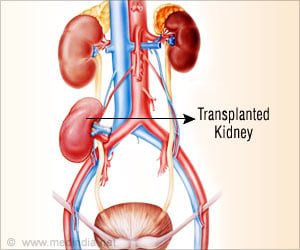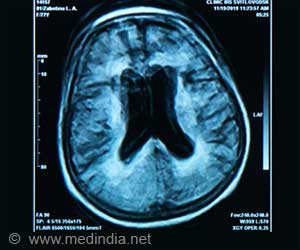A robotic kidney transplant has been done in the UK for the first time, signaling a revolution in ‘minimally invasive surgery’ for end stage renal disease patients.
First-Ever Robotic Kidney Transplant Surgery in the UK
Robots have been used to perform kidney transplant surgeries on two Britons in the UK. The robots were controlled by surgeons, but computerization and precision motors allowed a high degree of accuracy not possible with open surgery. Damage to the tissue was also markedly less, and so was the severity of pain and recovery time following surgery. Two Britons who successfully underwent kidney transplant by a robot have left hospital just four days after the procedure. Siobhan Morris, 42, and Andy Brooks, 58, underwent kidney transplants within a day of each another, and become the first patients in the UK to have the procedure performed by a robot.According to sources, the procedures were so precise and accurate, with very limited damage to that tissue that paracetamol drug was sufficient for pain relief following surgery. On the other hand, patients who undergo open surgery need morphine infusion for relief of pain.
Patients Share Their Joy And Amazement At The Pain Free Recovery
Morris, who previously received a kidney from her mother in 2007 said: "I was amazed. The pain is probably 80% less than it was first time round because they cut through all the muscles before and they didn't do any of that this time. It is so much easier."
Brooks was given strong painkillers at first before switching to paracetamol after a couple of days. A city worker from Sussex, he was given a kidney donated by his wife Tracy, 48, a dance teacher. "The post-operative recovery was much shorter than it would have been under the conventional transplant," he told the sources. "I was operated on Saturday (September 3rd). I was hopping out of bed on Sunday and walking about. It was an amazing experience."
Role of Indian Surgeon in The Landmark Kidney Transplant
"We have been incredibly impressed with the difference in recovery. Normally these patients would be on morphine infusions for two to three days," Nizam Mamode, a consultant transplant surgeon at the hospital said.
"The first patient didn't require any morphine at all and wanted to go home on day three," Mamode added. "Normally, in an [open surgery] transplant, you make a big incision and you cut muscle to go in, which is then painful. Potentially it is going to revolutionize transplantation."
The rapid advancement in robots means they are being tried out in more and more NHS procedures. Only last week a team in Oxford announced in a first time procedure, that they had used a robot to operate upon a human eye.
About Kidney Transplant
A kidney transplant is a surgical procedure in which a person with kidney failure gets a new kidney from either a living or deceased donor.
It is felt that a successful kidney transplant gives a better quality of life compared to long term dialysis, as it could mean greater freedom, increased energy and less dietary restrictions.
Evolution of Kidney Transplant Surgery Over Time
Alexis Carrel received the Nobel Prize in 1912 for perfecting the technique of vascular anastomosis (suturing) and doing autoplastic and homoplastic transplantation of the kidney and thyroid gland.
The first successful renal allograft transplant in human from a living donor was done by Joseph Murray in 1954 for which he received the Nobel Prize in 1990. This success resulted in the subsequent development of other solid organ transplantation such as heart, lung, and liver. In the following 40 years, several developments in immunotherapy and pharmacology of transplantation have occurred; nevertheless, the advancement in the technical aspects of surgery was limited.
The emergence of laparoscopic living donor nephrectomy in 1995 and subsequent introduction of robotic assisted surgery in 1999 signaled the development and advancement in the surgical technique in kidney transplants.
Drawbacks of Traditional Open Transplant Surgery
Traditionally open surgery for renal transplant surgery is carried out by incisions placed on the lower abdomen. The size and length of these incisions vary depending on the surgeon’s preference and the patient’s condition.
In general, the larger the incision, greater the degree of tissue damage. Post-operative pain and therefore recovery and convalescence period is also increased. Also they are cosmetically disfiguring.
In renal transplant patients, the presence of other co-existing conditions such as diabetes or obesity may complicate wound healing following surgery. Use of immunosuppressants is an additional risk factor. These concerns call for a minimally invasive approach in such cases.
Minimally Invasive Kidney Transplant Surgery
Laparoscopic renal transplant surgery was introduced recently and its effectiveness in reducing pain and tissue damage with improved healing was demonstrated.
Robotic surgery, also referred to as computer-assisted surgery, or robotically-assisted surgery signals the technological advancements that use robotic systems to aid in surgical procedures. Robotically-assisted surgery was developed to overcome the drawbacks of previously existing minimally-invasive surgical procedures and to improve the capabilities of surgeons performing open surgery.
The first full Robot Assisted Kidney Transplant (RAKT) was reported by Giulianotti and his team from Chicago in the late 2000’s. Several RAKT surgeries have been reported since.
Future of RAKT
Robotic-assisted kidney transplantation is fast emerging as a modality of minimally invasive surgery. Despite the interest in RAKT, the current high cost remains the most prohibitive factor limiting its more widespread use.
By achieving adequate kidney graft function and reducing surgical complications, robotic-assisted kidney transplantation offers hope to patients with End Stage Renal Disease (ESRD) to have more a realistic expectation regarding a more positive outcome following transplant. RAKT may even compensate the initial cost and prove profitable from a financial standpoint when viewed long term.
However, robotic surgery in organ transplantation involves usage of an advanced level of surgical technique. It requires a high degree of skill and expertise in any surgeon who considers using this method.
Larger trials and long-term follow-up of RAKT recipients will be required to determine its effectiveness.
References
- First Robotic-Assisted Dual Kidney Transplant: Surgical Technique and Report of a Case With 24-month Follow-up - (http://www.ncbi.nlm.nih.gov/pmc/articles/PMC4946483/)
- Robotic assisted kidney transplantation - (http://www.ncbi.nlm.nih.gov/pmc/articles/PMC4120216/)















